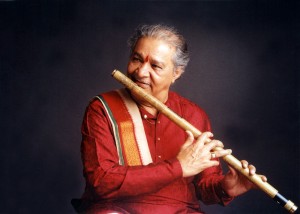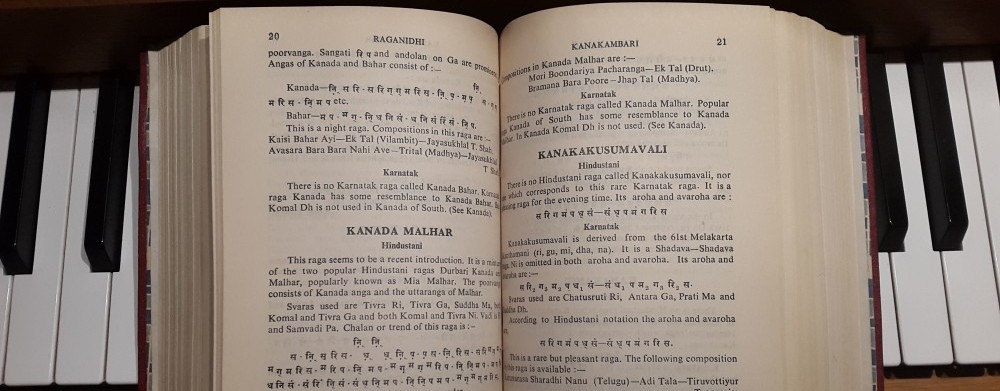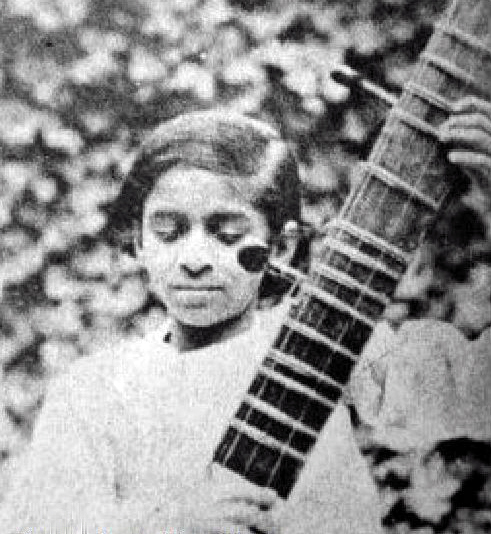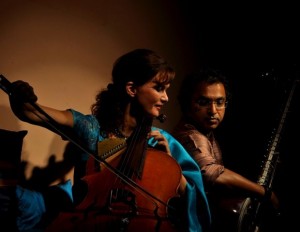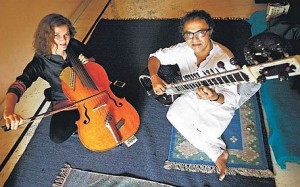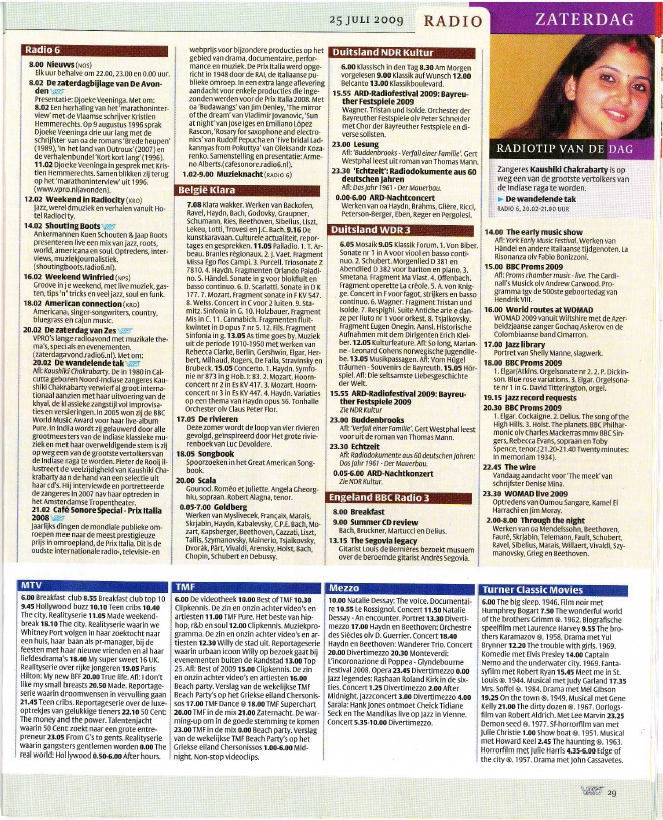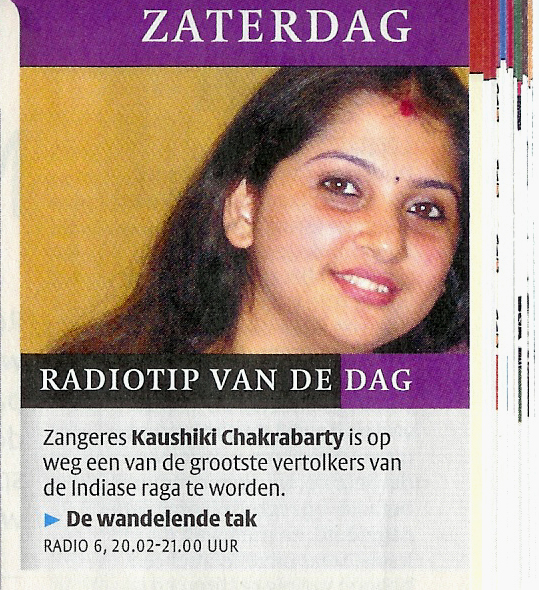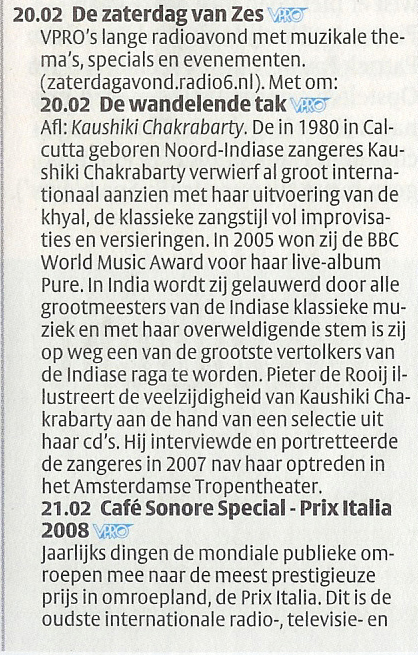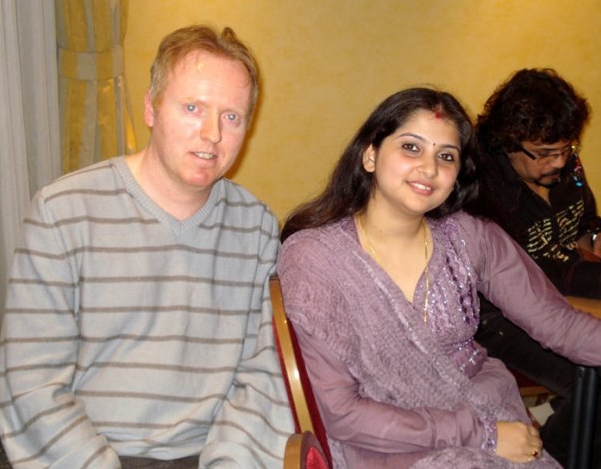Stap in de wondere wereld van de tabla en stem op vrijdag 29 augustus 2008 af op Gharana, het programma op de Concertzender over Indiase klassieke muziek, deze keer geheel gewijd aan de 39-jarige tablaspeler Yogesh Samsi uit Mumbai.
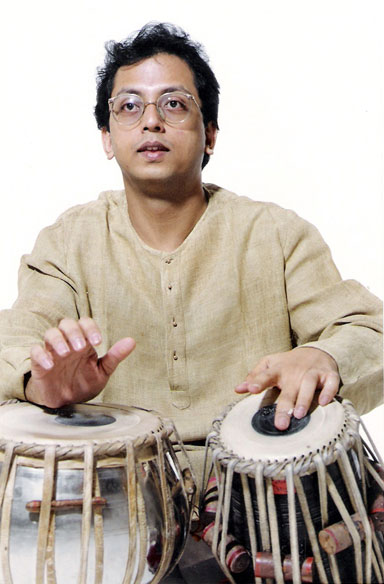
Yogesh Samsi
Wanneer je iets van Indiase muziek afweet en je Yogesh Samsi op foto’s ziet of hem live ziet spelen dan valt je wellicht iets bijzonders op aan z’n speelhouding, al kun je het misschien aanvankelijk niet benoemen of bedenken wat nou dat bijzondere is. Op de tabla -het uit twee trommels bestaande ritmische begeleidingsinstrument in de Noord-Indiase ragamuziek- speelt vrijwel elke speler de bhajan -de grote trommel voor de lage tonen- met de linkerhand en de dhajan – de kleinere trommel voor de hogere tonen – met de rechterhand. Yogesh Samsi doet het precies andersom, waardoor je de karakteristieke speelhouding en mimiek die je doorgaans gewend bent van tablaspelers in spiegelbeeld ziet. Zie je ‘normaal’ gesproken de linkerkant van het lichaam licht vooroverhellen bij het bespelen van de bhajan voor de lage tonen terwijl de rechterkant van het bovenlijf meer rechtop blijft of zelfs een beetje achterover helt bij het bespelen van de dhajan voor de hogere tonen, bij Yogesh Samsi zie je dit dus in spiegelbeeld. Dat is, als het je opvalt, boeiend om te zien, maar voor het muzikale resultaat maakt het niks uit. Ik heb er dan ook geen gespreksonderwerp van gemaakt toen ik hem eerder dit jaar interviewde in het Engelse Leicester, waar hij op de derde editie van het Darbar Festival maar liefst drie concerten begeleidde: een ‘unplugged’ avondconcert van sitar- en surbahar-(bas-sitar)speler Irshad Khan, een ochtendconcert van bansuri(bamboefluit)speler Rakesh Chaurasia – neef van Hariprasad Chaurasia – en het afsluitings-avondconcert van sitarspeler Purbayan Chatterjee.
In de eerste helft van het anderhalf uur durende programma schets ik een muzikaal portret van Yogesh Samsi. Hij vertelt over zijn muziek, z’n carrière, over z’n goeroes, over het muzikale leerproces, over het reciteren van tablafrasen – alles wat hij speelt kan hij ook reciteren in tabla bols of klanklettergrepen, hij zingt me zinnetjes voor als Dha Dha tirekite Dha Dha tin na en tirekitetake tirekitetake Dha Dhati Dha Dhati Dha – en hij vertelt over diverse tabla-speelstijlen. Als muzikale rode draad zijn in het portret steeds gedeeltes te horen van een in 2005 opgenomen tablasolo-album van Yogesh Samsi. Daarnaast worden zijn bespiegelingen uiteraard vergezeld van opnamen van zijn gurus en van zijn begeleidingsspel bij diverse instrumentalisten en vocalisten.
De eerste guru van Yogesh is z’n vader, Dinkar Kaikini, een beroemde zanger die behoort tot de zangschool van de Agra gharana.
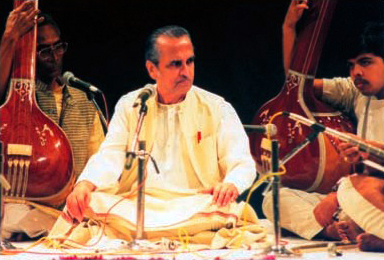
Dinkar Kaikini
Behalve over z’n vader vertelt Yogesh zeer uitgebreid over z’n voornaamste guru, tablaspeler Alla Rakha (1919-2000), een belangrijke exponent van de Punjab-stijl.
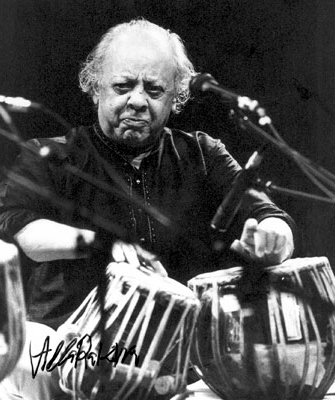
Alla Rakha
Alla Rakha was meer dan vijfentwintig jaar de vaste begeleider van Ravi Shankar en is de vader van tabla-icoon Zakir Hussain. In een intens guru-shishiya(guru-leerling)-leertraject werd Yogesh drie-en-twintig jaar lang door Alla Rakha ondergedompeld in de klankwereld van de tabla.
Yogesh Samsi wordt alom geprezen om zijn veelzijdigheid. Hij heeft een ijzersterke reputatie in het begeleiden van zowel instrumentalisten als vocalisten, twee terreinen die van de tabla een heel verschillende benadering en invulling vragen. In de tweede helft van het programma worden alle grote kwaliteiten van Yogesh Samsi nog es onderstreept in vier opnamen. Allereerst een mij uit Engeland toegestuurde, onuitgebrachte opname -die nergens eerder op de radio was te horen- met een gedeelte van het concert van sitarist Purbayan Chatterjee en Yogesh Samsi op het Darbar Festival 2008. Daarna volgt een even subtiele als virtuoze interactie tussen Yogesh’s tabla en de zingende viool van Kala Ramnath in de ochtendraga bhairavi, een opname uit 2007. Vervolgens demonstreert Yogesh zijn meesterschap als begeleider van Patiala-zanger Ajoy Chakrabarty, een opname met volledig aan elkaar gewaagd vocaal en instrumentaal vuurwerk waar de vonken van afvliegen.
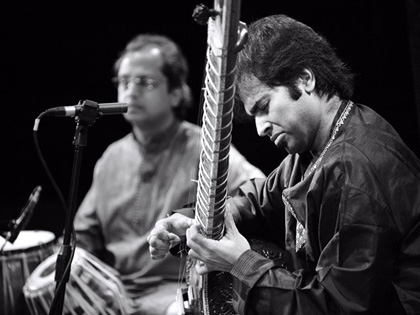
Darbar Festival 2008: tablaspeler Yogesh Samsi begeleidt sitarspeler Purbayan Chatterjee
De uitzending wordt besloten met een adembenemend mooie, vijftien minuten durende tablasolo van Yogesh Samsi, in deepchandi, een cyclus van veertien beats.
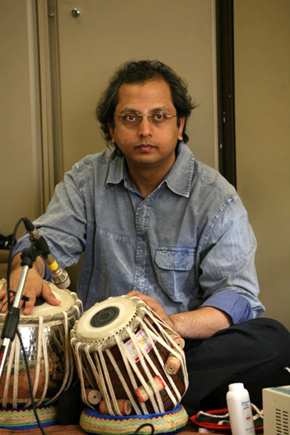
Yogesh Samsi
De Gharana-special over Yogesh Samsi is een ‘must’ voor de tablaliefhebber en ongetwijfeld een boeiende uitzending voor de breed geinteresseerde muziekliefhebber. Stap dus op vrijdagavond 29 augustus met Yogesh Samsi in de wondere wereld van de tabla of luister anders ‘on demand’ op een ander tijdstip naar de uitzending.
De Concertzender : Gharana – Yogesh Samsi / tabla ; Vrijdag 29 augustus 2008, 20.00-21.30u
Speellijst
in het muzikaal portret van Yogesh Samsi, in de eerste helft van het programma, klinken de volgende opnamen:
Title: Tabla Solo in Teentaal (16 beats)
Artist: Yogesh Samsi
Composer: trad.
Album : The Tabla Series – Yogesh Samsi
Label and Year : Sense World Music 061 ; P 2005 C 2005
Title: Raag Kaafi (thumri)
Artist: Dhruba Ghosh ; Yogesh Samsi
Composer: trad.
Album : Bowing Sounds From Dawn To Moonlight
Label and Year : Fonti Musicali FMD 202 ; P 1994 C 1994
Title: Rag Paraj
Artist: Pt. Dinkar Kaikini
Composer: trad.
Album : Sagar
Label and Year : Legendary Legacy CD-22 ; C 2004
Youtube video http://nl.youtube.com/watch?v=Joyk_EMtzn0
Title: Ravi Shankar, Alla Rakha – Tabla Solo in Jhaptal
Duration: 08:24
Artist: Ravi Shankar ; Alla Rakha
Composer: trad.
Year : ?
Title: Raga Devgiri Bilawal (Dhun in ektaal)
Artist: Ravi Shankar ; Alla Rakha
Composer: trad.
Album : The Teacher – Key Works
Label and Year : Manteca MANTCD036 ; C 2002
Title: Raga Rageshri – Khayal ‘Saban Sukh Deho’
Artist: Kaushiki Chakrabarty ; Yogesh Samsi
Composer: trad.
Album : Kaushiki
Label and Year : Sense World Music 097 ; P 2007 C 2007
Title: Raga Puriya Dhanashri
Artist: Kala Ramnath ; Yogesh Samsi
Composer: trad.
Album : Twilight Strings
Label and Year : RagaRanga RRCD-7000 ; P 2007 C 2007
———
in de tweede helft van het programma, na het portret, volgen:
Title: raag Jogkauns (closing segment of the alap, followed by the first part of the 1st composition)
Duration: 04:59
Artist: Purbayan Chatterjee ; Yogesh Samsi
Composer: trad.
recorded at the Darbar Festival 2008, Leicester, England
recording engineer: Christoph Bracher
then the following three complete recordings:
Title: Raga Bhairavi
Duration: 06:39
Artist: Kala Ramnath ; Yogesh Samsi
Composer: trad.
Album : Twilight Strings
Label and Year : RagaRanga RRCD-7000 ; P 2007 C 2007
Title: Raga Gunkali – Khayal ‘Gao Gunkali Guniyanme’
Duration: 13:14
Artist: Ajoy Chakrabarty ; Yogesh Samsi
Composer: trad.
Album : Jeevan
Label and Year : Sense World Music 069 ; P 2005 C 2005
Title: Tabla Solo in Deepchandi (14 beats)
Duration: 15:24
Artist: Yogesh Samsi
Composer: trad.
Album : The Tabla Series – Yogesh Samsi
Label and Year : Sense World Music 061 ; P 2005 C 2005
HOME
